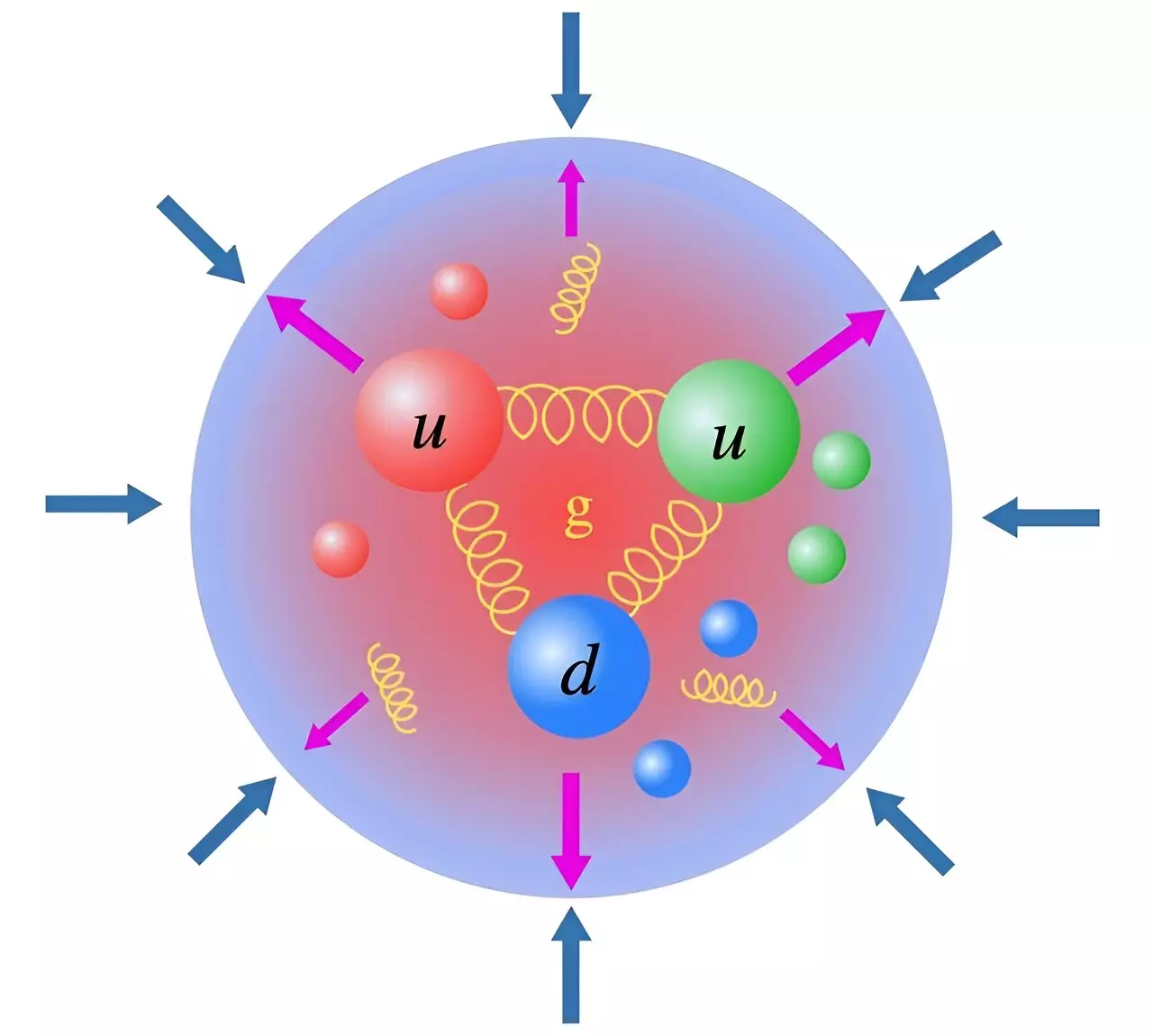Quantum chromodynamics (QCD) serves as the theoretical framework for delving into the forces at play within atomic nuclei, as well as their constituent protons and neutrons. The focus of QCD research often lies in understanding how quarks and gluons are contained within nucleons. While mathematically, the forces inside nucleons can be likened to gravity, the presence of quantum effects known as the “trace anomaly” introduces a different dynamic. These quantum effects, which deviate from the expected norms, may hold the key to maintaining the delicate equilibrium between the outward pressure inside nucleons and the cohesive forces that bind them together.
Recent studies have revealed that the trace anomaly can be gauged through the production of charmonium, a subatomic particle generated at facilities such as the Thomas Jefferson National Laboratory and the forthcoming Electron Ion Collider. Additionally, researchers have the ability to theoretically compute the trace anomaly using QCD. By amalgamating experimental observations with theoretical calculations related to the trace anomaly, valuable insights can be gained into the distribution of mass and pressure within hadrons, fundamental particles comprised of quarks and gluons.
In both hadrons and superconductors, the confinement of particles within a specific volume can be elucidated through a shared mathematical framework. This analogy extends to the cosmological constant and dark energy, which play roles akin to energy and pressure in equations describing the expansion and acceleration of the universe. The resemblances seen across these diverse systems, spanning from the microscopic to cosmic scales, offer a unified perspective on the concepts of energy, pressure, and confinement within different physical realms.
Probing the Dynamics of QCD
The ability to experimentally measure the trace anomaly and compute it within the lattice QCD framework represents a direct pathway to scrutinizing and comprehending the dynamics underlying quantum chromodynamics. These methodologies not only provide a means of exploring the intricate interplay between energy, pressure, and confinement across various scales but also afford a deeper understanding of the fundamental forces that govern the universe. Through the lens of quantum chromodynamics, the investigation of forces within nucleons offers a gateway to a unified comprehension of the diverse phenomena observed in the realm of physics.


Leave a Reply